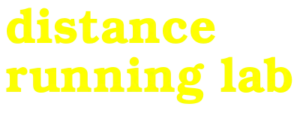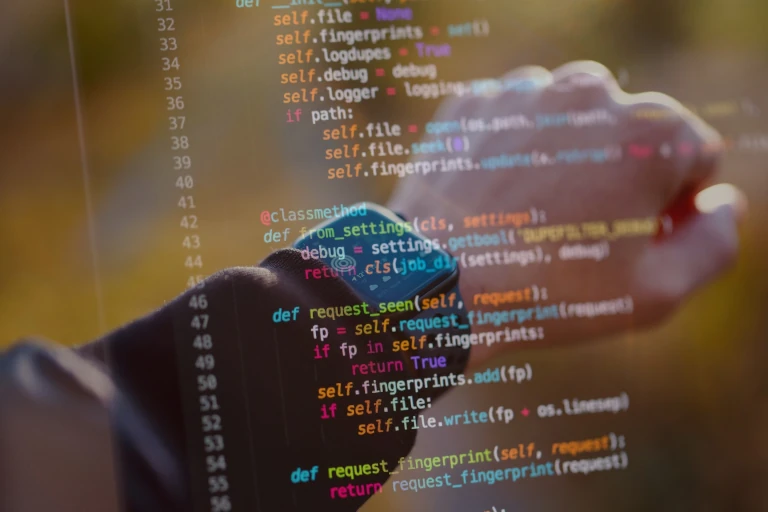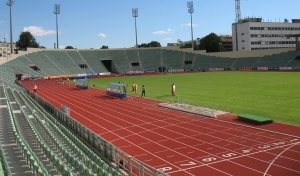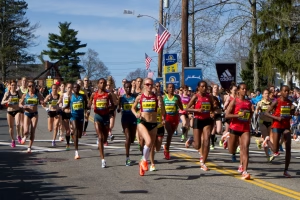- GPS running watch
- HR monitor
- Oxygen saturation sensor
- Compression boots
- Massage gun
- Altitude tent
- Metabolic sensor
- Sweat sensor
- Wearable movement sensors
- Psychological training
- Artificial intelligence programming
- Virtual reality
At present, I have no relationship, financial or otherwise, with any of the companies or products mentioned below.
GPS running watch
This is has become a popular tool to help quantify workouts. I remember things being much different a few decades ago, before global positioning system (GPS) technology made it into the wristwatch, and even before internet maps. Apart from traveling the entire route by car or bicycle, my method was to measured running distance with a piece string set against the legend of a paper map and then laying that string along my running route, following the printed curves of the road.
Nowadays, the convenience is clear – you get instant distance updates at any point. Speed is also available in real-time and looking at the data afterward shows peaks and valleys representing faster and slower portions of your run.
Best practice #1: Use your GPS watch to ensure you are running slowly enough on your easy days. Running too fast on easy days is a crucial mistake that will lessen your ability get the ideal training stimulus from fast sessions. If you must, set an audible alarm to signal you when you are exceeding your pre-determined easy pace by more than 15 seconds per mile. Yes, you might violate the rule when running downhill, but the rest of the time, this method should restrain you appropriately.
Is this micromanagement? Perhaps, but you are likely a driven person, and I’ll bet that you tend to push your easy runs just a little bit. So, you can either leave the watch at home and get no data, or employ this method so you always have a record of your workouts. Food for thought?
Best practice #2: Program your GPS watch to allow you to do your fast workouts anywhere, even in environments where there is no marked distance. Track is probably best for its uniform surface and perfect measurement, but athletic tracks can be difficult to access in some jurisdictions, and if you race on the roads, or must do longer distance intervals like repeats of 5 km road running can be appropriate. By all means, choose a safe running environment, but roads should have a place if that is where you race.
Low-tech alternative: Plot a route on Google Maps or MapMyRun. Record your time with a stopwatch and calculate your average running speed. Work with landmarks and intermediate times to refine the ideal pace for that workout.
HR monitors
Heart rate (HR) monitor watches have been around longer than GPS watches. Today, this technology is often part of the same wristwatch system that has a GPS sensor.
There are two main ways that HR is measured. The first is by measuring electrical activity at the skin. When your heart contracts and relaxes, there is an associated change in voltage of the cardiac muscle. This voltage can be detected at the skin level by a sensor placed on the chest, just below the chest muscles. Each voltage peak represents a beat.
HR can also be measured optically using infrared light shining through the skin. This light penetrates to the level of the pumping blood. The pulsing of the blood shows up as slight periodic changes in color for each beat, which is perceived by the sensor. For this method, the sensor is placed on the earlobe, wrist, or finger. If it is the wrist, the sensor can be part of the watch. This technology is not currently considered as accurate as a chest strap, but improvement is ongoing and may be sufficient for sports training in many instances.
HR is usually expressed in beats per minute (bpm) and has been considered to be among the best representatives of physiological intensity during exercise. This might be true in some cases, but I would argue that HR measurement alone does not provide the precision necessary to distinguish different race paces between, for example, 3000 and 5000 m or between 10 k and half marathon.
Best practice #1: Use HR to moderate your pace at the beginning of an ultra-distance effort like a mountain ascent, where running speed is too slow to provide useful information. I strongly suggest not using HR to moderate your effort during a 10k. Any hill of significance will drive up your HR a lot and if you try to moderate your pace based on that, you will slow down too much. Sometimes you just need to work the hill and train well so it affects you less than it affects your competitors.
Best practice #2: Use morning HR variability to gauge recovery. Some GPS/HR running watches have functions that assess recovery, but there are other stand-alone sensors that perform this as well. For example, during the Covid pandemic, the Whoop strap attained notoriety for its ability to identify potential sickness. Since sickness as well as training load affects your readiness to tackle the next workout, HR variability is suitable because it represents whole-body health and readiness.
Low-tech alternatives: Count your heartbeats with a light touch just beside your Adam’s apple. Count for 10 seconds and multiply by six for beats per minute. For a recovery assessment, are you excited for the challenge of your next workout or do you dread the thought? Most likely, this will correspond with your level of recovery.
I discuss in detail the use of heart rate monitoring in your training in this article.
Oxygen saturation sensor
Measuring oxygen saturation is relatively new to the sports consumer market. Oxygen saturation is how much oxygen is filling up the hemoglobin molecules in your blood. It will almost always be close to 100%, except in cases of disease, high altitude, or extreme exertion.
Best practice #1: For any high altitude athletic endeavor, whether running or mountaineering, use this to identify dangerous desaturation, where the level of altitude and/or your level of exertion are too high for your cardiovascular system to maintain oxygen levels in the blood. Warning and disclaimer: this enters into the medical domain. As with the rest of this website, I am not providing medical advice. If you perform activities that take you away from a normal oxygen saturation level, you need to work with a medical professional.
Compression boots
These clever contraptions apply high pressure to the legs and feet to stimulate recovery. There are two potential benefits here. The first is fluid pooling and return – that is, squeezing fluid from the legs back to the central circulation. This includes the metabolic byproducts of severe exercise but also fluid associated with cell damage, that has leaked out of the cell. The metabolic effects return to normal rather quickly, but damage is only repaired after an elaborate process of rebuilding the scaffolding of soft-tissue cells. Pressure from the outside aids fluid movement and therefore recovery. One of the many benefits of recovery runs is that blood flow is increased through the pumping action of the muscles, however, a recovery run itself has its own costs (energy expenditure, mild pounding, etc.). In the case of a compression boot, an outside system is doing the work for you.
Best practice: Use this for marginal gains if you wish to train at your very limits. The added benefit is that you can do other things such as reading, watching TV, or spending time at home with others (don’t bring this to the cafe!).
Top technology: Normatec.
Low tech alternative: Pool or hot tub. You might need a membership to get access to a pool but spending some time with your legs fully underwater takes advantage of increased pressure as well with the added weightlessness.
Massage gun
Here is a tool that has traditionally only been in the hands of therapists. A massage gun delivers a low amplitude, rapid vibration to target specific areas of muscle. In contrast to the general, overall pressure applied by recovery boots, a massage gun targets stubbornly tight areas of muscle. You might be locally sore after using this, particularly after the first few sessions.
Top technology: Theragun.
Low tech alternative: Massage roller. These start at just $15 or so. Choose the type of material (smooth, bumpy) and apply pressure manually.
Altitude tent
This is the most expensive tool on the list for now, and it is not the most convenient. You have probably heard the theory before: spend time at altitude and you will generate more red blood cells. These increase oxygen-carrying capacity and therefore your aerobic performance.
An altitude tent encases your bed to create a sealed environment from which some oxygen is scrubbed to simulate altitude. You would be using this device as part of the “live high-train low” paradigm because the altitude simulation obviously doesn’t follow you when you leave your bedroom space. There is a dose-response relationship as well that might require more than the usual 8-9 hours of sleeping time. Sure, you can watch TV all day long too for the ideal stimulus, but your social life is important too, isn’t it? There are also masks that can be used, or mini-tents that encase only your head.
Best practice: Many top athletes participate in altitude training camps lasting 3-4 weeks. The ideal altitude level might be 2000 – 2500 m.
Top technology: Hypoxico.
Metabolic sensor
This is one of the newer technologies for general consumers, although physiology labs have had this for decades. The principle is the same: exhale into the hand-held sensor, which measures your expired carbon dioxide. The greater portion of carbon dioxide in your breath indicates higher carbohydrate metabolism. The goal here is to hack your nutrition and exercise practices to enhance fat burning, if that is what you desire. The device provides the feedback so you can dial in your practices so you can be as metabolically flexible as possible.
Best practice: The challenge is to keep track of all the variables in your life that affect fat and carbohydrate metabolism. This is no easy task. As a starting point, pick two or three easily managed factors and work on those for a while. Learn from your habits and their consequences.
Top technology: Lumen.
Sweat sensor
Gatorade has produced a wearable single-use sweat sensor that helps estimate fluid loss, sweat rate, and sodium loss. It’s relatively easy to estimate total fluid loss with a bathroom scale, but sodium loss (that is, whether you are a “salty-sweater’) requires more elaborate measurement.
Although there have been appropriate cautions against over-drinking during endurance events, this is a useful product simply because it adds data to the discussion, which is always good, as long as you can learn from it. And I think you can.
Best practice: Use the patch to learn your rehydration needs in different situations: summer versus winter, indoor versus outdoor running (don’t forget the absence of wind indoors can really make you sweat).
Wearable movement sensors
I’ll limit my treatment here to accelerometers and inertial sensors of the kind that measure bounce, oscillation, and the like. This kind of data will get you stride variables such as stride rate because it’s relatively easy to identify the peaks that correspond with foot strike, and from that you can get a measure of average stride length. From there, you can calculate symmetry between the left and right leg (which one has higher impact?).
While there is potential to have an array of clothing-associated sensors that create a full-body skeleton of your running technique, it is still not easy to do this outside the lab. Technology continues to improve, but it is difficult to do it well. I hope that changes in the future. For now, many running watches already equipped with GPS and HR measurement also offer stride variables as part of the system.
Best practice: Use stride sensors to identify left-right imbalances and work to improve the strength and/or flexibility of the compromised side. This is where your strength and conditioning program can be directly informed by measurement technology, rather than just doing generic programs.
Top technology: Under Armour connected shoes, Garmin running dynamics.
Psychology
I hardly ever hear runners talk about classic sport psychology principles, but I think they should. When I was completing a coaching certification many years ago, a whole portion of the full-year training program assignment was devoted to psychological preparation. I had received the same content years earlier as a young athlete preparing for one of the national championships and had greatly benefitted from that side of training.
One example from running is that your attentional focus and activation must precisely match your starting pace. That means that for a 1500 m race, you need to be ready to execute from the very first lap. In a marathon, however, the danger is always going out too fast. In that case, you need to have a very relaxed frame of mind when standing on the start line. Getting into the right psychological zone must be practiced, believe me.
Best practice: Practice the way you compete. Develop routines that include visualization and imagery of successful competition performance. Learn to execute under pressure.
Top technology: Champion’s Mind.
The optimistic future: Artificial intelligence programming and virtual reality
I believe that the future of training will include these two fascinating aspects: using artificial intelligence (AI) to precisely tune every aspect of training, and the use of virtual reality (VR) to train in a setting of highly realistic simulated competition and tactics.
The greatest goal for programming and monitoring would be an early-warning system. With such a tool, the athlete and coach will be able to see injury risk develop a long way off so they can alter their training program long before anything bad happens. AI becomes necessary when there are so many variables monitored that we are unable to make sense of complex patterns with our human brains. For example, a certain training emphasis coupled with a certain type of nutritional deficiency always leads to a breakdown in a certain number of weeks. This is where the power of data science and artificial intelligence supports the decisions of athlete and coach.
Best practice: Gather as much data as possible about yourself and let the system make suggestions. Will the system be more intelligent than you and your coach? Only time will tell, but if you don’t measure it, you can’t manage it.
Top technology: Orreco, Kitman Labs.
Virtual reality has come a long way in the last few years, evidenced most highly by realistic and vivid video games and accompanying VR headsets. I think many people end up wasting their race day performance because they haven’t prepared for the race environment.
Training alone or even with a group doesn’t always simulate race conditions, especially in big city races, where the pack is crowded for miles after the gun. I would have the same comment for track races – rarely are all competition scenarios played out so each competitor can practice the execution of all tactical scenarios.
Best practice: Learn your pace. Then learn your pace when you are tired. Then learn your pace when you are tired and running amongst many others. Then do it when anxiety is high. Only then will you truly learn how to perform in such a way that your best effort comes out.
Top technology: Ghost Pacer.
Have I missed anything new and promising? Let me know in the comments!




